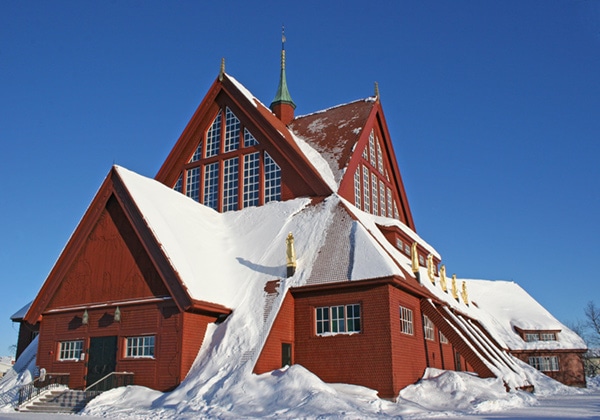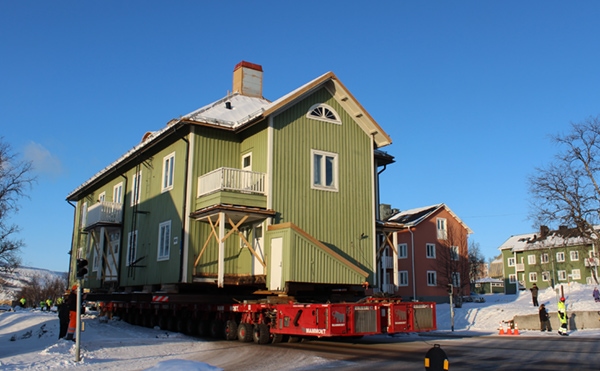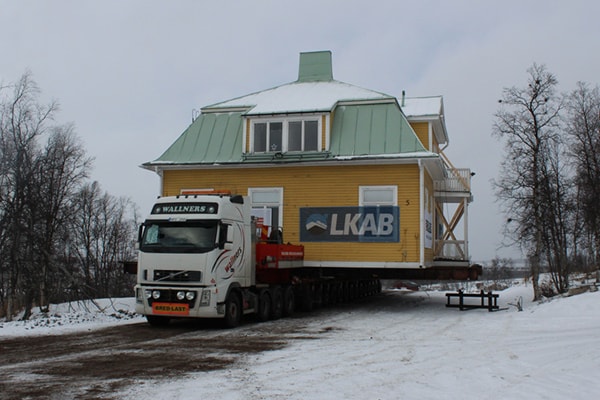
Anyone who has ever moved knows that you have to be patient and prepare for the inevitable stress. This situation necessarily means changes, followed by a process of adaptation that everyone handles differently. In the most extreme cases, it even causes anxiety. Planning ahead and knowing that not everything will go perfectly can help alleviate feelings of distress.
In Kiruna, the northernmost town in Sweden, they have been preparing to move part of the city for 16 years, and there are more years ahead in finishing it. Around 6,000 people have to move – some 33% of the population, though it will affect all residents. According to the city council’s sources, there are 3,200 homes, 750 hotel rooms, and around 1,000 office jobs in the affected area. There is also a shopping center and several public institutions, including two schools, the hospital, the library, a church, and a bathhouse.
Why was Kiruna originally founded?
For over 100 years, iron ore mining has been the main source of economic growth in Kiruna. In fact, this urban settlement first started around the mine, which has been expanding its mining surface this entire time, and it is what is now necessitating this massive move. The tunnels excavated for more than a century are the cause of the deteriorating terrain, which is no longer capable of supporting city life.
The LKAB company came to this region at the end of the 19th century after carrying out various geological investigations and deciding to locate its mining operation here. But there was one drawback: it was an uninhabited area with no one to hire, no economic forces to support its future activity. The solution to this problem was to create a community around the mine. It was designed from the ground up as a place where people would want to settle.
Starting in 1900, the population boomed, and more than 23,000 people currently live in Kiruna. Given the intensive use of the iron mine, the closest neighborhood was shuttered so it could continue mining the ore in the 1970s, and in 2006, it closed completely.
Two years earlier, the mining company had already detected cracks starting to appear in the city center. This sounded the alarm, triggering the launch of an urban transformation project to relocate the affected areas and maintain the first Swedish city designed expressly considering the environment in which it would develop.
What is the new urban plan for Kiruna?
In 2011, the city’s municipal council determined where the new urban center would be located, three kilometers from where it is now. For any other move, such a small distance would alleviate the stress we mentioned earlier, but when it comes to moving an entire city’s buildings and infrastructure, that requires a detailed plan. It is estimated that the move will last until 2035, and it must be done while interrupting the lives of residents as little as possible. This also includes the tourists who come to this town every year to see one of the most unique natural phenomena: the northern lights.
In the municipality of Kiruna, located in Swedish Lapland, the plan for the new urban development began in 2015. “It is our goal for there to be houses, offices and municipal facilities, in addition to commercial services, in the city center. The design is rectangular, and it will be surrounded by three avenues. Within this space, there will be a park and apartment buildings”, they explain in the project’s informational materials. It will also have a main square, a space that the current Kiruna lacks.
The new city hall will be here, and construction on a commercial street will start here and extend to one of the three roads surrounding this new area. The park will be approximately 50 meters wide and be lined with buildings on both sides, and it will connect the old city with the new one. “The residential neighborhoods will be designed so that nobody lives more than three blocks from nature,” they specify.
How is the move from Kiruna planned?
Since this project began, the idea has been for the new locations to be ready before the affected area is dismantled. Some buildings are going to be built from scratch so that they can be adapted to today’s needs and concepts. This includes the primary and secondary schools, with their completions estimated for 2021 and 2022, respectively.
The town hall is also being redesigned: a circular glass structure that arose from a competition for ideas. It is already a landmark of the new city. Other buildings that are of historical importance are going to be moved entirely, including a wooden church and the train station. 
As for housing, residents were given three options: tearing down their old house and receiving a new one; selling it for 25% over cost; or moving their house to the new location. The goal is to move as many properties as possible over these three kilometers so that residents can keep the private spaces that are part of their heritage and identity. The first moves began in 2019. The project’s management estimates that they will need to build 3,000 new homes.

How much the move of Kiruna costs?
The transfers to and construction of the new city will be paid for by the LKAB company. This move is in accordance with the provisions in Swedish legislation on the mining sector, which establishes that companies must pay for the costs of their operations’ effects. The investment made so far amounts to SEK 11.3 billion (about €1.072 billion) with an additional €17 billion (€1.612 billion) on reserve.






There are no comments yet